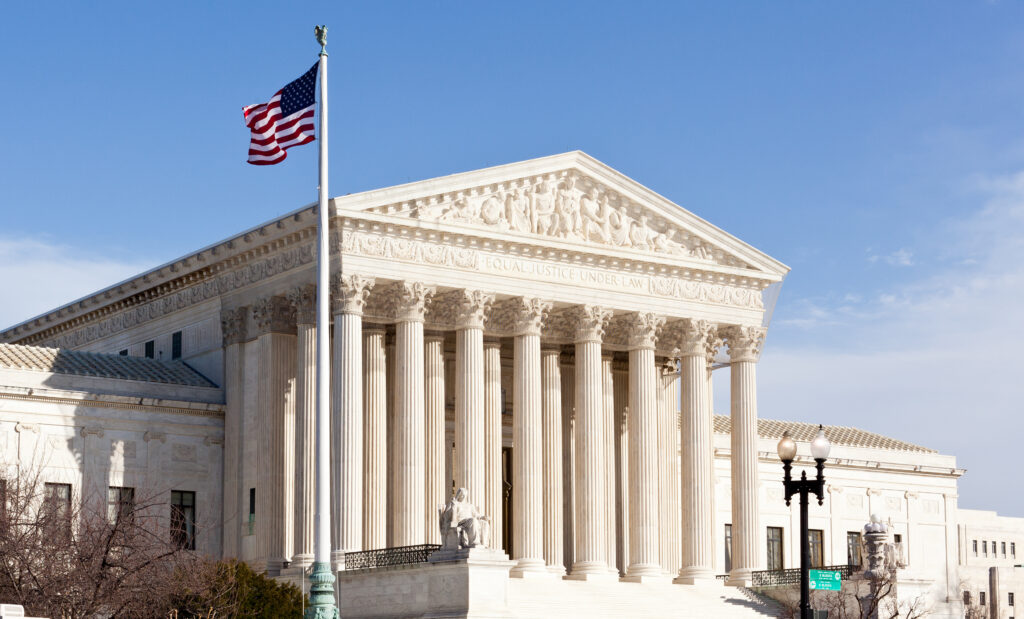The Hyde Amendment is Constitutional and Remains Critically Important
This is Issue 56 in the On Point Series.
Abortion advocates have always vehemently opposed laws that limit taxpayer funding for abortion. The Hyde Amendment, which Congress has applied to the annual appropriations bill for the Department of Health and Human Services for nearly all of the last 45 years, draws their greatest contempt, because it prohibits the use of federal and state matching Medicaid funds for most abortions—and has likely saved 2.4 million lives.[i] However, for many years the abortion industry grudgingly tolerated lawmakers who supported the Hyde Amendment, for principled or pragmatic reasons, as long as they remained in lockstep with the rest of their abortion agenda.
In 2010, however, the Affordable Care Act was enacted without Hyde language following a bitter battle in Congress.[ii] Later, an explicit attack on the Hyde Amendment was written into the 2016 and 2020 Democratic Party Platforms.[iii] Both President Biden’s newfound conviction that he can no longer support the Hyde Amendment and the enactment of the most recent “COVID relief” package without Hyde protections, in spite of valiant efforts by prolife members of Congress to secure its inclusion,[iv] demonstrate that the abortion lobby now fully expects proabortion lawmakers to advocate for the Hyde Amendment’s elimination.
Recent attacks against the Hyde Amendment predominately claim that the measure is discriminatory, even racist, because it disproportionately places a financial burden on women of color who want abortions[v] —a morbidly ironic argument, given that black unborn babies lose their lives to abortion at a rate four times higher than white unborn babies.[vi] The most vocal pro-abortion members of Congress recently introduced “The EACH Act,” which would repeal and prohibit any federal restrictions on abortion funding.[vii]
Abortion advocates are striving to swing public opinion in favor of taxpayer funding of abortion which, as recent polling demonstrates, continues to be a heavy lift.[viii] Framing Hyde as discriminatory is part of their renewed effort to garner support for their agenda. That support is critical, because the war against Hyde must be won in Congress by representatives elected by the people, not in activist courts. The United States Supreme Court has explicitly held since 1980 that the Hyde Amendment does not violate equal protection or due process rights under the Fifth Amendment to the Constitution. In Harris v. McRae, the Court held that
[A] State that participates in the Medicaid program is not obligated under Title XIX to continue to fund those medically necessary abortions for which federal reimbursement is unavailable under the Hyde Amendment . . . [and] that the funding restrictions of the Hyde Amendment violate neither the Fifth Amendment nor the Establishment Clause of the First Amendment.[ix]
In short, a legal “right” to abortion does not equal a right to payment for an abortion. The Court’s jurisprudence on this point is unequivocal.
Equally clear, however, is the need for prolife members of Congress to defend the Hyde Amendment. Congress has never succeeded in passing a law that comprehensively prohibits the use of federal funds for abortion, instead enacting a patchwork of federal funding restrictions, many of which must be passed annually.[x] Without these laws, courts and administrative agencies are likely to interpret any and all publicly funded healthcare as including abortion.
Courts have held, for instance, that in order to participate in the federal-state Medicaid program, a state must cover abortions that fall within one of the Hyde exceptions—currently rape or incest, or life of the mother. Also, the Sixth Circuit Court of Appeals noted that during congressional debate over the Hyde Amendment, members of Congress “recognized that, should the Hyde Amendment fail to pass, ‘every State will be required to provide matching funds for abortion on demand.’”[xi]
In other words, if Congress prohibits abortion funding or coverage with exceptions in a healthcare program, courts consider the abortions that meet those exceptions “medically necessary.” If Congress fails to prohibit abortion funding or coverage in a healthcare program, courts will permit abortion providers to determine which abortions are “medically necessary” (i.e., all abortions), and therefore covered.[xii]
The Hyde Amendment is constitutional, and it saves lives. Hyde stands for the proposition that the wealthiest and strongest country in the world can and should provide life-affirming healthcare coverage to those who need it. Without the Hyde Amendment, Americans will be compelled to pay for tens of thousands of abortions a year with their federal tax dollars. And Congress will be complicit in the deaths of unborn children whose mothers deserve support, not a payment to end their pregnancies.
Mary E. Harned, J.D. is an associate scholar at the Charlotte Lozier Institute
[i] Charles Donovan and Star Parker, Repealing the Hyde Amendment Would Endanger Black Babies, Washington Examiner, Mar. 23, 2021, https://www.washingtonexaminer.com/opinion/op-eds/repealing-the-hyde-amendment-would-endanger-black-babies, citing Michael J. New, Addendum to Hyde at 40: Analyzing the Impact of the Hyde Amendment, July 2020, https://lozierinstitute.org/addendum-to-hyde-40-analyzing-the-impact-of-the-hyde-amendment/. See also Michael J. New, Hyde at 40: Analyzing the Impact of the Hyde Amendment, On Point, Issue 12 (Sept. 2016), https://lozierinstitute.org/wp-content/uploads/2016/09/OP_hyde_9.28.3.pdf.
[ii] The Affordable Care Act lacks a comprehensive prohibition on the use of federal tax dollars for abortions and insurance coverage for abortion. The law explicitly permits health plans that cover abortions to participate in the Health Insurance Exchanges and for those plans to obtain federal subsides. The ACA requires an accounting system where issuers of insurance plans that cover abortions in the Exchanges must collect from enrollees a “separate payment” for abortion coverage (i.e., the abortion premium) and a “separate payment” for everything else. While taxpayer funds are not permitted to contribute to the abortion coverage, this restriction depends on the continued, independent existence of the Hyde Amendment. If Hyde is not passed, insurance plans that cover abortions within Exchanges will be permitted to use federal subsidies to pay for abortions directly. Further, implementation of this policy has been difficult, and there are challenges to the separate payment provision pending in the Fourth and Ninth Circuit Courts of Appeals (Planned Parenthood v. Azar, 4th Cir. No. 20-2006; State of California v. U.S. Dept. of Health and Human Services, 9th Cir. No. 20-16802; Washington v. Azar, 9th Cir. No. 20-35521). In his March 24, 2010 executive order relating to federal funding for abortion—which was part of the compromise to get prolife Democrats to vote for the bill in the House—President Obama said his policy was consistent “with longstanding restrictions on the use of federal funds for abortion.” However, the EO could not replace the absence of a comprehensive prohibition on the use of federal funds for abortions and insurance coverage of abortion.
[iii] 2016 Democratic Party Platform, https://democrats.org/wp-content/uploads/2018/10/2016_DNC_Platform.pdf. “We will continue to oppose—and seek to overturn—federal and state laws and policies that impede a woman’s access to abortion, including by repealing the Hyde Amendment.” 2020 Democratic Party Platform, https://democrats.org/where-we-stand/party-platform/achieving-universal-affordable-quality-health-care/. “Democrats oppose and will fight to overturn federal and state laws that create barriers to reproductive health and rights. We will repeal the Hyde Amendment, and protect and codify the right to reproductive freedom.”
[iv] Biden Betrays “Unity” Pledge, Signs Massive Expansion of Taxpayer-Funded Abortion, Mar. 11, 2021, https://www.sba-list.org/newsroom/press-releases/biden-betrays-unity-pledge-signs-massive-expansion-of-taxpayer-funded-abortion.
[v] E.g., Katherine Brown, My patients shouldn’t have to fight this hard for an abortion. When will Biden get in the ring? USA Today, Mar. 7, 2021, https://www.usatoday.com/story/opinion/voices/2021/03/07/pro-choice-abortion-hyde-amendment-obgyn-biden-harris-column/4592699001/.
[vi] Charles Donovan and Star Parker, Repealing the Hyde Amendment Would Endanger Black Babies, Washington Examiner, Mar. 23, 2021, https://www.washingtonexaminer.com/opinion/op-eds/repealing-the-hyde-amendment-would-endanger-black-babies, citing James Studnicki et al, Perceiving and Addressing the Pervasive Racial Disparity in Abortion, Health Services Research and Managerial Epidemiology Volume 7: 1-4 (2020), https://www.ncbi.nlm.nih.gov/pmc/articles/PMC7436774/pdf/10.1177_2333392820949743.pdf.
[vii] H.R. 2234, To ensure affordable abortion coverage and care for every person, and for other purposes, 117th Cong. (2021), https://www.congress.gov/bill/117th-congress/house-bill/2234?s=2&r=2.
[viii] Americans Opinions on Abortion, Knights of Columbus, MARIST Poll (Jan. 2021), https://www.kofc.org/en/resources/news-room/polls/kofc-americans-opinions-on-abortion012021.pdf.
[ix] 448 U.S. 297, 326 (1980). See also Beal v. Doe, 432 U.S. 438 (1977) (holding that Pennsylvania’s refusal to extend Medicaid coverage to “nontherapeutic abortions” was not inconsistent with the Social Security Act); Maher v. Roe, 432 U.S. 464 (1977) (upholding the constitutionality of a state welfare regulation under which Medicaid recipients received payment for services related to childbirth, but not for “nontherapeutic abortions”); Poelker v. Doe, 432 U.S. 519 (1977) (holding that the Constitution did not forbid a state or city from expressing a preference for childbirth over nontherapeutic abortions by providing services for childbirth and not abortions); Webster v. Reproductive Health Services, 492 U.S. 490 (1989) (upholding the state’s restrictions on the use of public employees and facilities for the performance or assistance of “nontherapeutic abortions”).
[x] Government programs or appropriations that include Hyde-like language: Labor, Health and Human Services, and Education appropriations (Medicaid, CHIP, Medicare), the Department of Defense, the Department of Veterans Affairs, the Federal Employee Health Benefits Program, the Department of Justice, the District of Columbia, State and Foreign Operations, Indian Health Services, and the Federal Bureau of Prisons.
[xi] Planned Parenthood Affiliates of Michigan v. Engler, 73 F.3d 634,638 (6th Cir. 1996) (quoting Senator Hatch). Similar statements from Senator Nickles, Representative Dornan, and Representative Waxman are quoted in Hern v. Beye, 57 F.3d 906, 912 (10th Circ. 1995).
[xii] Id. The Sixth Circuit held that “abortion fits within many of the mandatory care categories, including ‘family planning,’ ‘outpatient services,’ ‘inpatient services,’ and ‘physicians’ services.’” Further, the Hyde Amendment “defines medically necessary abortions that must be funded by the federal government and participating states.” See also, Preterm, Inc. v. Dukakis, 591 F.2d 121, 126-34 (1st Cir. 1979): the state must cover abortions that “would qualify for federal reimbursement under the terms of the Hyde Amendment.” The court found it “unreasonable” and “[i]nconsistent with the objectives” of Medicaid “for a state to provide abortion services and then … deny it to all those who will not die without it.” Roe v. Casey, 623 F.2d 829, 837 (3rd Cir. 1980): “to conform with the Hyde Amendment, the Pennsylvania statutes would have to provide funding for rape and incest cases in addition to those situations where abortions are necessary because of danger to the mother’s life.” Hope Medical Group for Women v. Edwards, 63 F.3d 418, 425-28 (5th Circ. 1995): the “state cannot … adopt an abortion funding restriction … without taking the medical necessity of the procedure into account.” The court also noted that “[a]lthough Title XIX does not specifically include abortion as a mandatory service, the parties concede that abortion services fall under several of the eight broad categories of medical services mandated by the Act, including inpatient hospital services, outpatient hospital services, physician’s services, and family planning services.” Zbaraz v. Quern, 596 F2d 196, 199 (7th Circ. 1979): “limiting Medicaid assistance to life-threatening abortions ‘violate[s] the purposes of the Act and discriminate[s] in a proscribed fashion.’” Hodgson v. Board of County Com’rs, Hennepin County, 614 F.2d 601, 607-15 (8th Circ. 1980): “it [is] plain that [Medicaid mandatory categories] include medical procedures to induce abortions.” Also, “[a]bortions, like other medical services, must be subsidized on the basis of the recipient’s financial and medical need.” However, “Minnesota’s Title XIX obligation to subsidize abortions is modified by the Hyde Amendment.” Little Rock Family Planning Services, P.A. v. Dalton, 60 F.3d 497, 499 (8th Circ. 1995) “the state plan must cover medical services that a person’s physician certifies are ‘medically necessary,’” and “a medically necessary abortion is a mandatory covered service.” (In Dalton v. Little Rock Family Planning Services, 516 U.S 474 (1996), the U.S. Supreme Court reversed the 8th Circuit’s decision and enjoined Arkansas law only to the extent that it was inconsistent with federal law). Hern v. Beye, 57 F.3d 906, 910 (10th Circ. 1995): “[a]bortion falls under several … ‘mandatory coverage’ categories,” and state law restricting coverage of abortion to “those instances when the expectant mother’s life is at stake … violates the requirements of federal law.”























